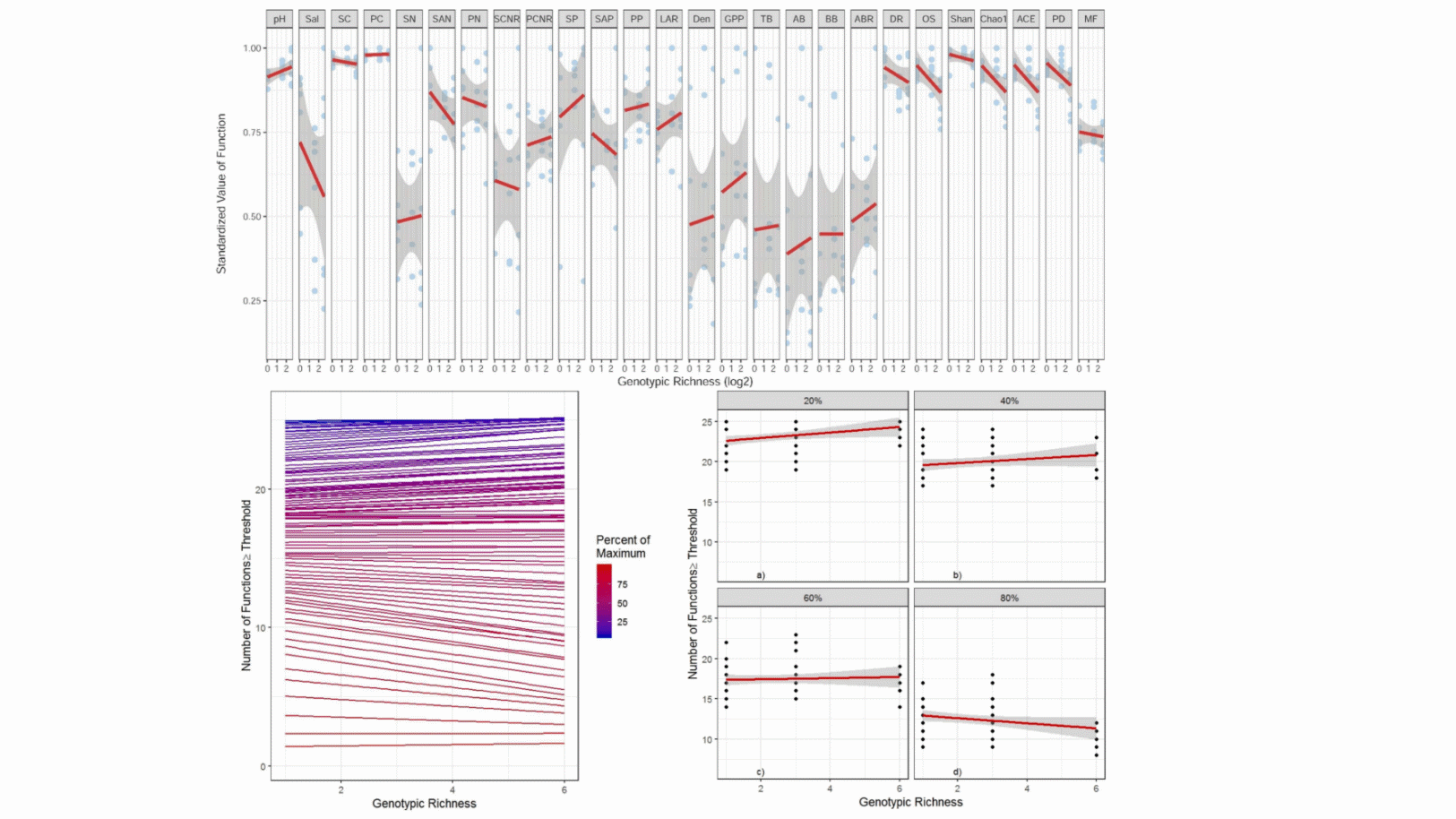2025-05-13 中国科学院(CAS)
 The relationship between genetic diversity and ecosystem functions (EFs). (Image by HAN Guangxuan’s group)
The relationship between genetic diversity and ecosystem functions (EFs). (Image by HAN Guangxuan’s group)
<関連情報>
- https://english.cas.cn/newsroom/research_news/earth/202505/t20250513_1043546.shtml
- https://www.sciencedirect.com/science/article/pii/S2351989425002100?via%3Dihub
中国・黄河デルタの沿岸湿地における生態系の多面的機能性に影響を与えるフユボダイジュの遺伝子型の豊富さ Genotypic richness of Phragmites australis negatively impacts ecosystem multifunctionality in the coastal wetland of Yellow River Delta, China
Liwen Zhang, Lianjun Zhao, Siqun Lan, Lin Chen, Guangxuan Han
Global Ecology and Conservation Available online: 25 April 2025
DOI:https://doi.org/10.1016/j.gecco.2025.e03609
Highlights
- Investigated the relationship between genotypic richness of Phragmites australis and ecosystem multifunctionality.
- High genetic richness in P. australis negatively impacted the species diversity of the associated bacterial community.
- As the genotypic richness of P. australis increased, the average multifunctionality index exhibited a decreasing trend.
- An increase in genotypic richness may reduce ecosystem multifunctionality, so be cautions when introducing new genotypes.
Abstract
The study of the relationship between genetic diversity and ecosystem functions (EFs) primarily focuses on the relationship between species diversity and EFs, with less emphasis on investigating the connection between genetic diversity and EFs, particularly in relation to ecosystem multifunctionality. We conducted an outdoor common garden experiment to manipulate the genotypic richness of Phragmites australis and investigate its relationship with ecosystem multifunctionality in the coastal wetland of the Yellow River Delta. Our findings revealed that the impact of genotypic richness of P. australis on EFs varied in the coastal wetland of the Yellow River Delta, particularly with regards to soil bacterial richness, where P. australis genetic richness has been found to exert a significantly negative effect. The analysis further demonstrated that as genotypic richness increased, there was a corresponding decreasing trend in the average multifunctionality index. This could be attributed to competitions among genotypes leading to a reduction in ecosystem multifunctionality. Furthermore, when considering different thresholds (the proportion of EF reaching their maximum value) for EF (20 %, 40 %, and 60 %), higher genotypic richness led to an increased number of EFs attaining the maximum value. However, at the higher level (80 %) threshold, higher genotypic richness reduced the number of EFs reaching the maximum value. Our study demonstrated that an increase in plant genotypic richness may reduce ecosystem multifunctionality. It suggests that the introduction of new genotypes into an ecosystem may potentially reduce its multifunctionality, thus caution should be exercised when introducing new genotypes.

